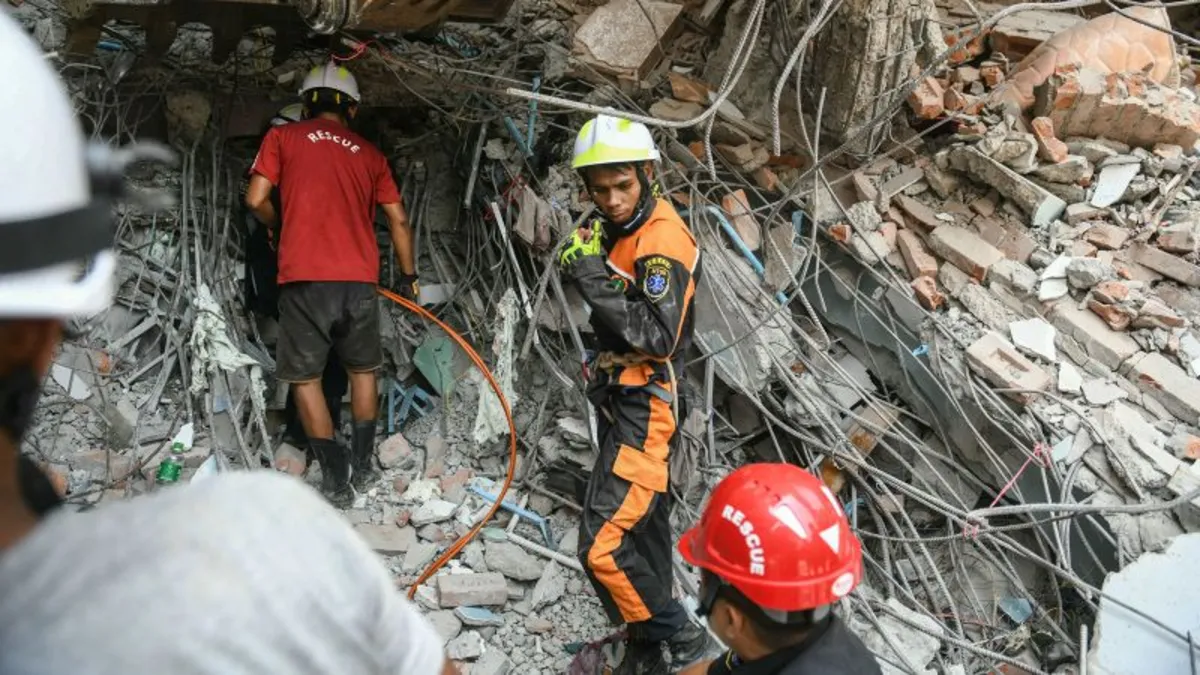
More than 1,000 people have been confirmed dead following a devastating 7.7-magnitude earthquake that struck Myanmar on Friday. As rescue efforts continue, many remain trapped under the rubble of collapsed buildings. The isolated nation, already struggling to respond to natural disasters due to ongoing civil conflict since 2021, has begun to receive foreign aid, highlighting the urgency of the situation. Here’s what you need to know about this catastrophic event.
According to state broadcaster MRTV, the death toll has tragically risen to 1,002, with numbers expected to increase further as rescue operations progress. The earthquake impacted many areas nationwide, and the US Geological Survey has warned that the final death toll could exceed 10,000. Currently, rescue teams are facing significant challenges, with reports indicating that survivors are resorting to using their bare hands to dig through the debris in the absence of heavy machinery.
As the dust settles, heartbreaking stories from survivors are beginning to emerge. One woman from Mandalay shared a chilling account of her grandmother being trapped beneath rubble after part of their house collapsed. “It hit very strong and very fast,” she recalled. A former lawyer from the city reported that three members of his wife’s family were killed in the earthquake, and they have yet to recover their bodies from the wreckage.
In a rare move, Myanmar's government has issued a plea for international assistance, leading to the arrival of foreign aid. A team from China, Myanmar's key ally, landed in Yangon on Saturday, with additional rescue teams from Russia and India also deployed. Countries such as Hong Kong, Singapore, and Malaysia have pledged support in the form of rescue teams as well.
Min Aung Hlaing, the chief of Myanmar's military junta, visited the severely affected city of Mandalay to assess the damage caused by the earthquake. The junta, which has faced international isolation due to its actions in the ongoing civil war, is now confronted with the additional burden of this natural disaster, complicating their response efforts.
Thai Prime Minister Paetongtarn Shinawatra announced that Thailand has largely returned to normalcy after the earthquake caused tremors across the country, including its capital, Bangkok. Only one building, a construction site, collapsed, resulting in at least 10 fatalities in Thailand. However, search teams are still working to identify any survivors trapped in the rubble.
Recovery operations are ongoing in both Bangkok and Mandalay, but the devastation from the 7.7-magnitude earthquake is significant. In Myanmar, the country’s weak infrastructure complicates relief efforts, as it is one of Asia's poorest nations. The director of a humanitarian organization stated that it could take years for some of the hardest-hit areas to rebuild.
Many aid organizations are struggling to reach those affected by the earthquake. Dr. Kyi Minn from World Vision Myanmar expressed concerns about damaged infrastructure hindering access to affected areas. Similarly, Federica Franco from Medecins Sans Frontieres noted the complications arising from communication blackouts in the hardest-hit regions. Joe Freeman from Amnesty International has urged the military junta to grant humanitarian access to all quake-affected areas, emphasizing that the disaster has struck at a dire moment for the country.
The World Health Organization has reported “enormous” damage from the earthquake, activating its logistics hub to find trauma supplies for victims. The Red Cross has highlighted major destruction in several regions, including Mandalay, Sagaing, and Naypyitaw. With the ongoing civil war adding layers of complexity, it remains difficult to obtain a comprehensive understanding of the full extent of the earthquake's impact.
As the situation develops, international support and resources will be crucial in aiding recovery efforts for the people of Myanmar affected by this tragic natural disaster.